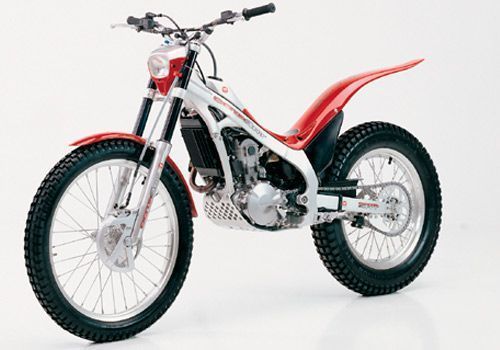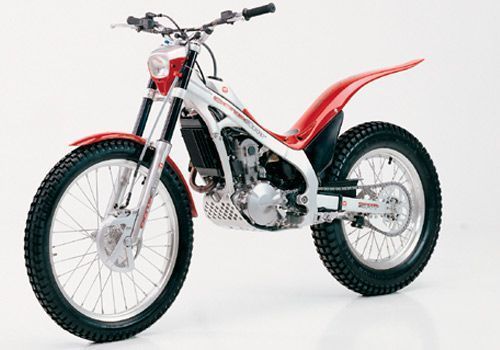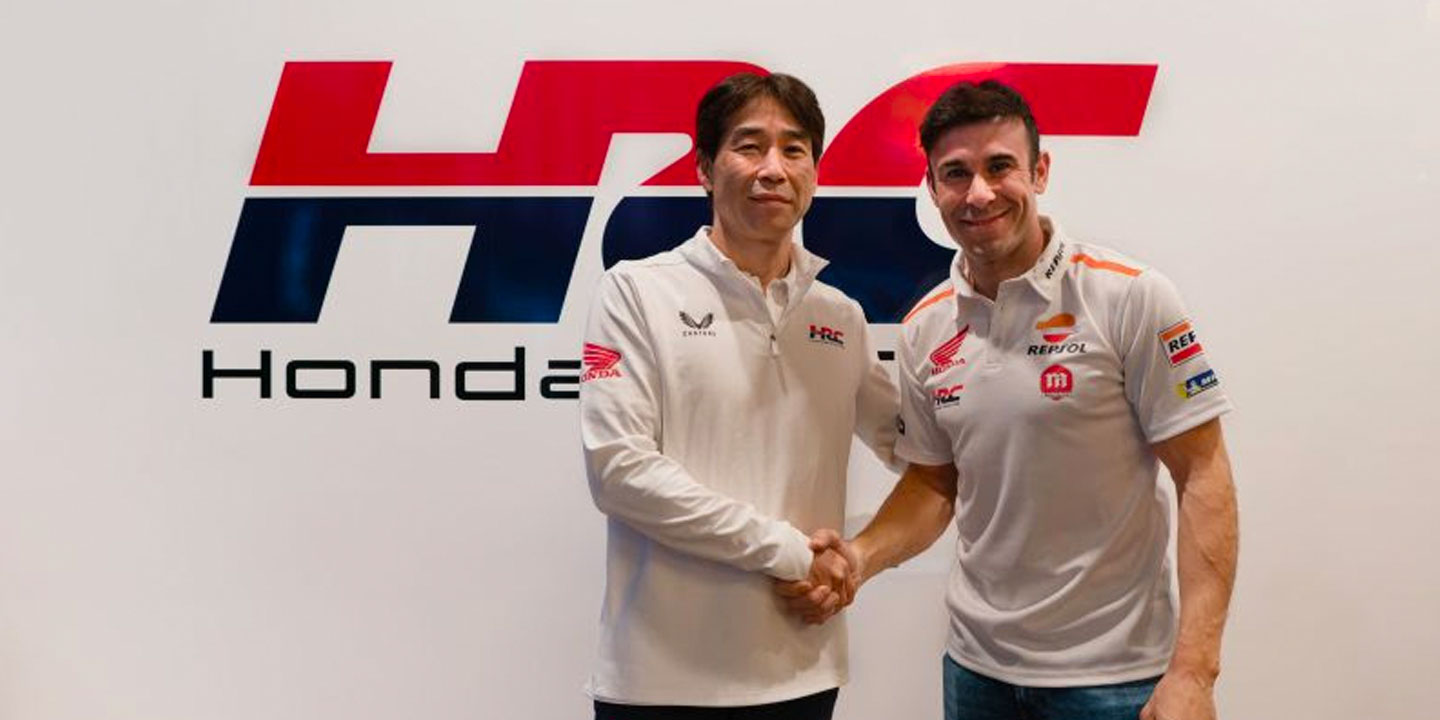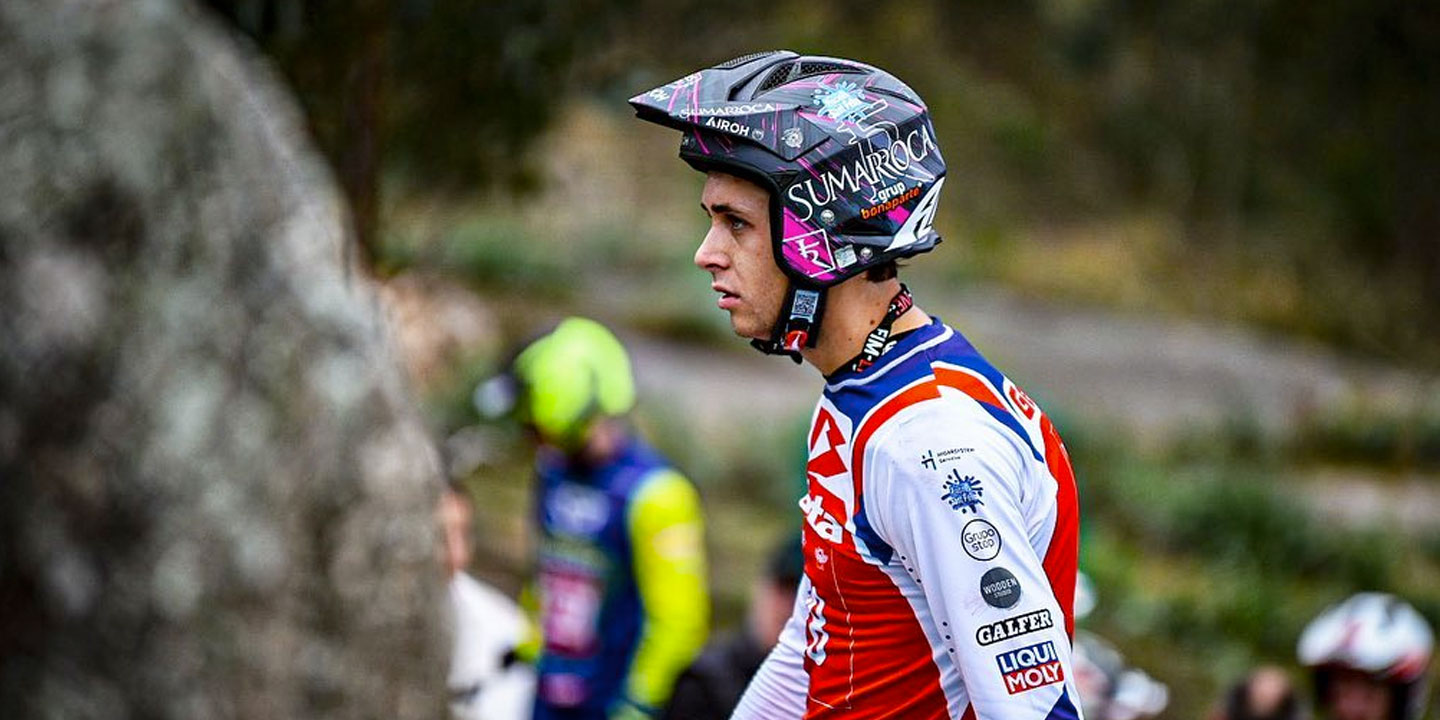
That same May, Honda and HRC debuted the Honda RTL 250F – Japanese version of the 4RT in a World Championship event, achieving a magnificent eighth place, confirming that following this line of work, soon the 4T will be able to perform in the zones as the 2T currently did.
The Montesa 4RT has also wanted to set a new benchmark in the design of trial bikes, with a line in which the fuel tank and exhaust system are integrated into its stylized bodywork.
The aesthetics of the 4RT are sober but successful, combining the emblematic red color of the brand, with silver details that further enhance its figure, in addition, to commemorate this new stage, Montesa has created a new logo that breathes the much more modern air.
SOPHISTICATED
Without a doubt, the most important point of the 4RT is its revolutionary A liquid-cooled four-stroke engine, which has been developed by Honda engineers, from the advanced 249.1cc four-valve engine that powers the CRF 250 motocross bike. The great challenge was, without a doubt, to create a mechanic that maintained competitive performance against the lightweight 2T, while being compact and light. finally stopping the scales at 25.2 kg – 3 kg more than in the Cota 315R-.
The configuration of The new cylinder head has been a key point , since in addition to reducing its height as much as possible, it has been sought that the design of its combustion chamber be as efficient as that of its predecessor, so that the action of the valves is carried out by A simple camshaft acting on conventional rocker arms.
Another of the strengths of this mechanic is The great evolutionary step that has been achieved by replacing the classic carburetor with a complete injection system, where the throttle body and all the digital electronic controls are also integrated into a lightweight unit, located where the carburetor was normally placed. In addition,the multiple sensors are responsible for automatically adjusting the unit to the demands of the terrain , even at high altitudes, a task that was previously carried out by manually modifying the carburetion parameters.
The 4RT’s transmission also features a hydraulic clutch , which is smoother and more progressive than the 315R, which combined with a new gear ratio, makes its five speeds ideal for both high-level trials and long excursions.
This The engine also features a high-precision digital ignition system, which also does not need a battery for its operation, but the engine incorporates a large ACG alternator, which produces the necessary current to cover all the electrical needs of the Cota 4RT, while increasing the mass of the crankshaft to offer a sweeter operation.
Finally, as an example of the high technological level at which this mechanic is located, Montesa offers the possibility of modifying the ignition curve and the injection map by means of a computer program, in which we ourselves can design a configuration according to the type of terrain or riding, being able to easily return to the initial parameters if we wish.
ACCURATE
As far as the cycle part is concerned, the 4RT has been created from scratch, but following the premises of its predecessor, starting from a redesigned frame composed of double aluminum beams, this time narrower and lighter –1.6kg less than in the Cota 315R-. On top of this, a narrow fuel tank of only 2.1 litres – sufficient given its lower consumption As we can see, it is bulkier at its highest part, and inside is the gasoline pump in charge of supplying the necessary fuel to the injectors.
In terms of suspensions, the Montesa continues to count on the prestigious support of Showa, which maintains the line of the 315R, equipping a fully adjustable 39mm fork, and an effective Pro-Link system assisted by linkages in the rear axle. Much of the blame for its dynamic improvement is the significant weight reduction of more than 600gr experienced by its axles, which on this occasion have 32-spoke wheels instead of the usual 36 on the 315R.
FEELINGS
The feeling of seeing in front of your eyes what is going to be the beginning of a new era in the world of trial, is at least emotional. From the outside, the 4RT is a simple bike, with the same dimensions and suspension scheme as any current 2T, but with a new personality. From the moment it was launched everything is different, the first thing I did was to go crazy looking for the usual “starter”, which does not exist, since it is automatic.
Once this step has been passed, the cockpits do not manifest any novelty, it is noticeable that the 4RT is more compact and has a smoother clutch than that of its predecessor. However, the differences emerge at the same time as we turn the throttle fist, at which point the 4RT unleashes the fury of its tubes, beginning to roar a rough and excessive sound , with which we will surely not go unnoticed, a delicate point without a doubt.
Before reaching the first areas, we find a small section of interzone, ideal for corroborating the excellent road behaviour of the Cota, as it is a good place to see the road behaviour of the Cota.Thanks to its low and great traction, we can drive in fifth gear calmly, because with a simple stroke of gas the engine revs again with joy. The second and toughest test takes place on twisty dirt trials, a terrain that suits it like a glove to bring out the virtues of its smooth mechanics.
Accustomed to a 2T, At the beginning, the tricky part is getting it right with the speed to engage, Since the first and second are long, with a very direct response to the first throttle stroke, maybe it doesn’t have the dazzling rise of a Q2, But it is certainly more forgiving of mistakes of excess gas.
The torque and power curves announced by Montesa rightly reflect a greater range of revs in which its maximum power is usable, but a priori, the feeling is to be less rabid when a sudden delivery of power is needed to overcome great steps. Of course, it has been proven that for an average user and even for experienced users, the 249.1cc does not fall short, it is true that it takes hours of use to know its reactions and make the most of the advantages that its high technology allows.
Where the 4RT cannot be reproached at all is at the level of part of the cycle, because in addition to transmitting great stability and firmness, it has managed to counteract the greater weight of its engine, with optimal weight distribution, and suspensions that make its final 73.8kg go almost unnoticed. Its fork is undoubtedly the best on the market , as it enjoys an enviable poise and lightness, with very homogeneous reactions compared to the rear axle, somewhat more penalized when placing the bike.
Text: David Quer









